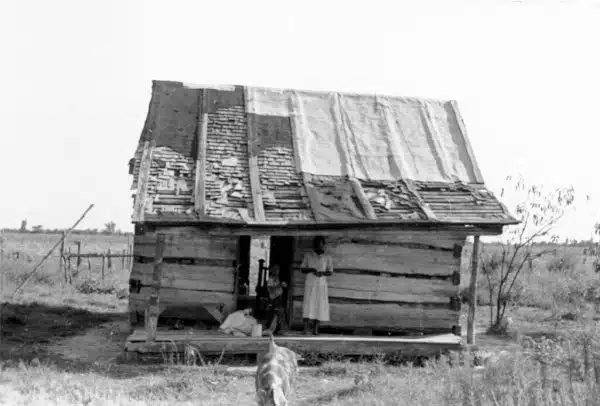Building a porch roof is an essential aspect of constructing a functional outdoor space. Porch roofs provide ample shade and protection from the elements, making them ideal for relaxation and entertainment. However, constructing a porch roof requires careful planning and execution to ensure that it is structurally sound and aesthetically pleasing.
As a construction engineer or building contractor, it is crucial to understand the various steps involved in building a porch roof. From selecting the right materials to choosing the appropriate design, every aspect of the process must be carefully considered to achieve optimal results. This article will provide you with step-by-step guidance on how to build a porch roof that not only enhances your property’s curb appeal but also serves as an inviting space for family and friends. Whether you are looking to renovate your existing porch or construct a new one from scratch, this article will equip you with everything you need to know about building a porch roof that meets your requirements.
Assessing Your Porch’s Structural Integrity
According to a study conducted by the National Safety Council, falls from elevated surfaces account for nearly 20 percent of all work-related injuries. Given that porches are typically elevated and exposed to harsh weather conditions, it is important to assess their structural integrity before building a roof. Assessing porch stability involves examining the foundation, support beams, and overall framing of the structure.
To ensure proper evaluation of your porch’s structural integrity, it is recommended to consult with a licensed contractor or structural engineer. They can provide professional insight and identify any potential hazards or weaknesses in the design. The contractor may also suggest solutions or modifications to improve stability and prevent future issues.
Taking the time to properly assess your porch’s stability before installing a roof will not only increase safety but also save you time and money in the long run. With a solid foundation and strong support beams, your porch roof will be able to withstand harsh weather conditions and provide years of protection for you and your loved ones. Next, we will discuss measuring and marking your roof’s dimensions to prepare for installation.
Measuring And Marking Your Roof’s Dimensions
Before building your porch roof, it is crucial to measure and mark the dimensions accurately. Measuring tools such as a measuring tape, level, square, and chalk line can help make the process easier. A measuring tape is useful for determining the length and width of your porch roof, while a level ensures that the measurements are accurate and balanced. A square comes in handy when marking right angles, which are essential for ensuring structural integrity. Lastly, a chalk line is used to mark straight lines on the surface.
One of the most common mistakes when measuring and marking porch roofs is not taking into account the slope or pitch of the roof. The slope of your roof affects its overall stability and durability; therefore, it’s crucial to ensure that it’s measured correctly. Another mistake is not double-checking your measurements before proceeding with construction. Making sure that your measurements are accurate can prevent costly errors later on in the building process.
In summary, accurately measuring and marking your porch roof’s dimensions is a crucial step in ensuring its overall stability and longevity. Using proper measuring tools and avoiding common mistakes such as neglecting to account for slope or pitch can make all the difference in creating a safe and functional porch roof for years to come. In the next section, we will discuss how choosing the right roofing material further contributes to achieving these goals.
Choosing The Right Roofing Material
Once you have measured and marked the dimensions of your porch roof, it is time to consider the materials that you will use for building it. There are several options available, each with its own set of pros and cons. The most common materials used for porch roofing include asphalt shingles, metal roofing, and tile roofing.
Asphalt shingles are a popular choice due to their affordability and ease of installation. They are made from a fiberglass mat coated in asphalt and granules. This type of roofing material is lightweight, fire-resistant, and comes in a variety of colors. However, they may not be as durable as other materials and have a shorter lifespan.
Metal roofing is another option to consider. It is long-lasting and low-maintenance, making it an excellent investment for homeowners looking for durability. Metal roofs come in different styles, including corrugated panels or standing seam roofs. While metal roofing can be more expensive than asphalt shingles upfront, it has a longer lifespan and requires less maintenance over time.
When selecting the appropriate roofing style for your porch roof project, there are several factors to consider such as your budget, climate where you live in addition to the overall design aesthetic of your home. Each material has its pros and cons when it comes down to cost comparison; therefore take into consideration these factors before making a decision on which material will be best suited for your project. Ultimately the right choice will depend on your specific needs and preferences while keeping in mind various elements such as durability, lifespan cost-effectiveness among others.
Selecting The Appropriate Roofing Style
Choosing the right roofing style for your porch can be a daunting task, especially if you are not familiar with the different types of roofing materials available in the market. Before making any decisions, it is crucial to assess your needs and budget. A professional contractor or roofing specialist can help you make an informed decision about which roofing style will best suit your needs.
Roofing materials comparison is an essential aspect when selecting the appropriate roofing style for your porch. The most common types of roofing materials include asphalt shingles, metal roofs, clay tiles, and slate roofs. Each type of material has its own unique benefits and drawbacks that should be considered before making a final decision. Understanding these differences will help you choose a roof that meets your requirements while staying within your budget.
Benefits of different roofing styles are another important consideration when selecting a porch roof design. For instance, gable roofs provide excellent ventilation and allow natural light into the house, while hip roofs are more stable in high winds due to their sloping design. Flat roofs have become increasingly popular due to their modern look, but they require regular maintenance to prevent water damage. Understanding the advantages and disadvantages of each style will help you make an informed choice that suits both your personal preferences and practical needs.
Now that we have explored different types of roofing materials and styles, calculating the required pitch and overhang is the next critical step towards building a sturdy porch roof. This process involves determining how much slope is needed so that rainwater flows off the roof without causing any damage. Additionally, overhangs protect against wind-driven rain by directing water away from walls and windows. With accurate measurements for pitch and overhang in hand, you can proceed with confidence towards building a durable porch roof that will serve you well for years to come.
Calculating The Required Pitch And Overhang
After selecting the appropriate roofing style, the next step is to calculate the required pitch and overhang for your porch roof. Pitch calculation involves determining the slope of the roof, which is essential for proper draining of water. An incorrect pitch may result in water pooling on your roof, leading to costly damages.
To get an accurate pitch measurement, you will need a level, a tape measure, and a calculator. Start by measuring the horizontal distance from the ridge board (the highest point of your roof) to the end of the rafter. Then measure the vertical distance from that same point to where you want your overhang to be. Divide the vertical distance by half of the horizontal distance to get your pitch measurement.
Once you have your pitch measurement, it’s time to determine your overhang measurement. The overhang is simply how much of your roofing material extends beyond your exterior wall. The table below provides recommended overhang measurements based on roofing materials and pitch:
| Roofing Material | Low Pitch (2:12-4:12) | Medium Pitch (4:12-8:12) | High Pitch (8:12 or more) |
|---|---|---|---|
| Asphalt Shingles | 1-2 inches | 1.5-3 inches | 2-4 inches |
| Metal Panels | 0-1 inch | 0.5-1 inch | 1-2 inches |
| Clay Tiles | 6-9 inches | 8-10 inches | 10+ inches |
By following these guidelines for pitch calculation and overhang measurement, you can ensure that your porch roof will not only look great but also function correctly. In preparing your roof’s framing, be sure to take into account any additional weight that may come with certain roofing materials such as tiles or metal panels. Proper framing and support are crucial for a sturdy and long-lasting porch roof.
Preparing Your Roof’s Framing
- Accurate measurements of the roof pitch are essential to ensure the roof trusses are installed correctly.
- Roof trusses should be placed in the appropriate locations with adequate support from the framing members.
- Framing members should be securely fastened to the wall and roof structure for maximum stability and strength.
- Measurements should be taken at the eaves, ridge and hip lines to accurately determine the angle of the roof pitch.
- Trusses should be attached to the framing members using galvanized nails or screws to ensure a secure connection.
- Framing members should be checked for level, plumb and square before being attached to the wall and roof structure.
Measuring The Roof Pitch
When it comes to building a porch roof, measuring the roof pitch is a crucial step in preparing the roof’s framing. Calculating pitch involves determining the angle of the roof’s slope, which is essential for ensuring that the porch roof will be stable and secure. To achieve this, we use specialized tools such as a level and a roofing square to accurately measure the angle of the roof.
Roof pitch tools are essential for measuring the slope of your porch roof. The roofing square is an L-shaped tool that can be used to measure angles up to 45 degrees. It has two arms: one long and one short, both with measurements marked on them. Using this tool, you can easily determine your porch roof’s pitch by aligning it with the rafters and measuring their angle.
Calculating pitch requires precision and attention to detail. You should take accurate measurements at multiple points along the length of each rafter to ensure that there are no variations in slope. By using roof pitch tools correctly, you can ensure that your porch roof will have a stable and secure framing structure that will last for years to come.
Installing The Roof Trusses
Once the roof pitch has been determined, it’s time to move on to installing the roof trusses. There are different types of roof trusses available, such as king post, queen post, and Howe trusses, each with its own advantages and disadvantages. It’s important to choose the right type of truss for your porch roof structure based on factors such as the span of the roof and load-bearing requirements.
To install the roof trusses correctly, it’s crucial to follow some tips. One of these is to ensure that all trusses are properly aligned and spaced according to their design specifications. Additionally, it’s important to use appropriate fasteners, such as screws or nails, to secure the trusses firmly in place. Finally, bracing should be used during installation to keep the trusses stable until the sheathing can be installed.
Proper installation of roof trusses is essential for ensuring a strong and durable porch roof structure. By choosing the right type of truss and following best practices during installation, you can create a sturdy framework that will protect your porch against weather elements for many years.
Securing The Framing Members
After determining the roof pitch and installing the roof trusses, the next step in preparing your porch roof’s framing is securing the framing members. This involves drilling holes and fastening brackets to attach the framing members securely to each other and to the foundation of your porch.
To secure your porch roof’s framing, you will need to use appropriate hardware such as screws, nails, or bolts. It’s important to choose hardware that is strong enough to bear the weight of your porch roof and withstand weather elements. Before drilling holes, ensure that you have measured all components accurately so that they fit together snugly.
Once you have drilled holes and fastened brackets onto your porch roof frame, it’s essential to check for stability before proceeding with any further construction work. You can do this by gently nudging or shaking the frame to see if there are any weak spots or loose connections. By taking these precautions in securing your porch roof’s framing members, you can create a sturdy structure that will provide years of protection against weather elements.
Installing The Ridge Beam And Rafters
Once the porch roof frame is complete, it’s time to install the ridge beam and rafters. The ridge beam is a horizontal structural element that runs along the top of the porch roof, while the rafters are diagonal members that connect to the ridge beam and extend down to the top plate of the walls. Both components play a vital role in supporting the weight of the porch roof and transferring it to the walls.
To install these elements, begin by attaching the ridge beam to the center of the porch roof frame using metal brackets or wood screws. Once secure, attach each rafter to one end of the ridge beam and angle them towards the top plate on each wall. Use metal hangers or wood blocks to secure each rafter in place, ensuring that they’re spaced evenly across the width of the porch.
After installing all of your rafters, it’s essential to inspect them for any signs of damage or defects. Any issues should be addressed immediately before proceeding with subsequent steps. Lastly, consider decorative options such as adding trim or molding around your porch roof’s perimeter. Additionally, proper maintenance tips should be followed regularly to ensure its longevity and safety over time.
- Properly aligning each rafter will ensure that weight distribution remains even.
- Use pressure-treated lumber for maximum durability and resistance against outdoor elements.
- Ensure adequate ventilation underneath your porch roof structure by installing soffit vents along its underside.
Next up is installing fascia and soffit without compromising on safety or quality!
Installing The Fascia And Soffit
Accurate measurements of the fascia are necessary in order to ensure a proper installation. Careful measurements should be taken to determine the length and width of the fascia board, as well as its placement on the roof. Appropriate cutting tools should be used when cutting the fascia board to the desired size. Installation of the soffit is best accomplished by fixing the soffit panels to the fascia board. The soffit panels should then be securely fastened to the roof joists, verifying the stability of the panels. Finally, any gaps between the panels should be filled with caulk or foam to protect against water damage.
Measuring The Fascia
Accurately measuring the fascia is a crucial step in installing a porch roof. The fascia serves as the trim that covers the ends of the roof rafters, providing support for the gutters and adding aesthetic value to your home. Therefore, it is essential to measure it properly to ensure that it fits perfectly.
To measure the fascia, you need to start at one end of the porch and measure its length by running a tape measure along its bottom edge. Make sure that you record this measurement accurately, as even small errors can cause significant problems later on. You can then repeat this process for each section of fascia until you have measured all of them.
There are several tips for accurate fascia measurements that you should keep in mind. Firstly, make sure that you are measuring from one end of the porch to another in a straight line. Secondly, use a level to ensure that your measurements are straight and avoid any dips or curves in the porch roofline. Lastly, always double-check your measurements before cutting any materials to avoid costly mistakes. By following these steps and taking time with your measurements, you can ensure that your porch roof is both functional and aesthetically pleasing.
Cutting The Fascia
After measuring the fascia accurately, the next step in installing a porch roof is cutting the fascia. The type of material used for the fascia will determine the cutting technique to be employed. Different types of fascia material include wood, PVC, and metal. For wooden fascia, a circular saw or handsaw can be used to make straight cuts. However, for intricate designs, a jigsaw may be more suitable. A PVC fascia can be cut with a handsaw or specialized PVC cutting tools to avoid cracking or chipping. Metal fascia may require tin snips or a metal-cutting blade on a jig saw.
To ensure accurate cuts when cutting the fascia, it is essential to use precise measurements obtained during the measurement process. Before making any cuts, double-checking all measurements is crucial to avoid costly mistakes that may result from inaccurate calculations. Additionally, it is advisable to mark where you intend to make your cuts before proceeding with any actual cutting.
Furthermore, safety precautions should be taken when cutting fascia materials; proper protective gear such as gloves and eyewear should be worn at all times while handling tools that produce debris and dust particles. With these techniques in mind and taking into consideration safety measures during installation, you can achieve an aesthetically pleasing porch roof with accurately cut fascias that are both functional and durable.
Installing The Soffit
After carefully measuring and cutting the fascia, the next crucial step in installing a porch roof is installing the soffit. Like choosing materials for the fascia, selecting appropriate materials for the soffit is equally important. Plywood, vinyl, and aluminum are some of the popular materials used for soffits. The choice of material will depend on factors such as budget, aesthetic preferences, and durability.
Installing ventilation is another essential aspect to consider when installing a soffit. Proper ventilation helps prevent moisture buildup, which can cause damage to the roof and attic space. There are several ways to install ventilation in a soffit. One common method involves creating vents by cutting holes in the soffit material or using pre-made vent strips that can be installed along with the soffit.
Installing a porch roof requires careful planning and attention to detail. Choosing appropriate materials for both the fascia and soffit and ensuring proper installation of ventilation are critical steps towards achieving a functional and aesthetically pleasing porch roof that will last for years to come. As construction engineers or building contractors, it is our responsibility to provide quality workmanship that meets our clients’ needs while also prioritizing safety measures during installation.
Adding Ventilation Features
Imagine a house as a living being, with every part playing an essential role in its survival. The roof is the head that protects everything underneath, including the lungs that breathe air in and out of the house. Just like a human body needs oxygen to function well, so does a house need proper ventilation to maintain good indoor air quality. It is crucial to have good ventilation in your porch roof to ensure that it’s not just a structure but also a healthy space for you and your family.
The importance of ventilation cannot be overstated when it comes to building a porch roof. Without adequate ventilation, moisture can build up inside the roof and cause problems such as mold growth, wood rot, and structural damage. Proper ventilation can prevent these issues by allowing fresh air to circulate throughout the roof space and exhaust warm or moist air to the outside. Additionally, it helps regulate temperatures inside the house during hot weather months.
There are various types of ventilation options available for porch roofs, depending on your preference or design requirements. Some popular choices include ridge vents, gable vents, soffit vents, and turbine vents. Ridge vents run along the top ridge of the roofline and allow air to escape naturally through convection currents. Gable vents are placed near the peak of gable walls to allow hot air to exit from attics or crawlspaces beneath them. Soffit vents are located under eaves and draw cool outside air into attic spaces while pushing out warm indoor air through higher exhaust vents like ridge or gable vents. Turbine vents use natural wind power to rotate turbines that suck hot air out of attics.
Ventilation is key for maintaining a healthy environment within your home’s porch roof area while also protecting its structural integrity. By choosing from different types of ventilation options available in today’s market, you can customize your porch roof according to your needs and preferences without compromising its functionality or safety features. In our next section, we will discuss installing roof decking and underlayment to provide a stable foundation for your porch roof.
Installing Roof Decking And Underlayment
After completing the framing and ensuring that it is level, the next step in building a porch roof is to install the roofing materials. The type of roofing material you choose will depend on your budget, climate, and personal preference. Common roofing materials for porch roofs include asphalt shingles, metal panels, and clay or concrete tiles.
When installing the roofing material, it is important to follow proper installation techniques to ensure that your porch roof will be durable and long-lasting. This includes properly securing the materials to the roof deck using appropriate fasteners and ensuring that there are no gaps or holes where water can seep through. Additionally, proper ventilation should be installed to prevent moisture buildup which can lead to rot or mold growth.
After installing the roofing materials, it is recommended to also install an underlayment. Roofing underlayment acts as an additional layer of protection against moisture and helps to prevent leaks. There are several types of underlayment available including felt paper, synthetic underlayment, and rubberized asphalt membrane. It is important to choose an underlayment that is appropriate for your specific roofing material and climate conditions.
Transitioning into the subsequent section about applying shingles or other roof coverings: Once you have installed the decking and underlayment for your porch roof, you are ready to move on to applying shingles or other roof coverings. This step is crucial in protecting your porch from weather elements such as rain or snow while also adding aesthetic value to your home’s exterior. The process of applying shingles or other coverings will vary depending on the type of material chosen but should always follow proper installation techniques for maximum durability and longevity.
Applying Shingles Or Other Roof Coverings
Accurately measuring and cutting shingles is a critical step for successful roof installation. To ensure proper coverage and prevent water from seeping in, the shingles should be cut to fit the roof’s angles and curves. Additionally, roof underlayment should be installed prior to the shingles to provide an additional layer of protection. Finally, the underlayment should be attached to the roof decking with roofing nails to help keep it in place.
Measuring And Cutting Shingles
As a construction engineer or building contractor, you should be aware of the different shingle types available in the market to determine which one is best for your porch roof installation. The most common types are asphalt and fiberglass shingles. Asphalt shingles come in two varieties: organic and fiberglass-based. Organic shingles are made of felt paper that is coated with asphalt, while fiberglass shingles consist of a layer of glass fiber that is sandwiched between two layers of asphalt.
Once you have selected the appropriate shingle type, it’s time to start measuring and cutting them to fit your porch roof. A good cutting technique is essential for obtaining accurate results, so it’s important to use a sharp utility knife or roofing scissors when cutting your shingles. You can also use a circular saw or jigsaw if you’re dealing with a large number of cuts. Make sure to measure each shingle accurately before making any cuts as even minor errors can impact the overall look and performance of your roof.
Remember that precision is key when cutting shingles for your porch roof. Take into consideration the pitch and shape of your roof as well as any obstructions like vents or chimneys when making cuts. It may take some practice to perfect your technique, but with patience and attention to detail, you can achieve professional-looking results that will last for years without needing repairs or replacements.
Installing Roof Underlayment
After selecting the appropriate shingle type and cutting them to fit your porch roof, the next step is installing roof underlayment. This process is crucial as it serves as a waterproof barrier between the shingles and the roof deck, protecting the underlying structure from water damage. To properly seal underlayment, start at the bottom of the roof and work your way up, overlapping each layer by about six inches. Use roofing nails or staples to secure the underlayment to the deck, making sure not to leave any gaps or wrinkles.
When it comes to choosing the best underlayment options for porch roofs, there are several types available in the market. The most common ones are felt paper and synthetic materials like polyethylene or polyester. Felt paper is an affordable option that provides moderate protection against water and weather elements. However, synthetic materials offer superior durability and resistance to moisture and UV rays, making them a better choice for areas with extreme weather conditions.
Properly installing roof underlayment is essential for ensuring a long-lasting porch roof that can withstand various weather conditions. By using high-quality materials and following proper installation techniques, you can protect your home from water damage while also improving its overall energy efficiency. With these tips in mind, you can confidently tackle your next porch roofing project with ease and efficiency.
Adding Flashing And Sealant
Once the shingles or other roof coverings have been applied, it’s time to move on to adding flashing and sealant. Flashing is a vital part of protecting your porch roof from water damage and leaks, as it directs water away from vulnerable areas. It’s important to use the correct type of flashing for your particular roof design, and to install it properly in order to ensure its effectiveness.
When applying sealant, it’s important to follow best practices in order to prevent future leaks. One common mistake is over-applying sealant, which can actually do more harm than good by trapping moisture inside and causing rot. Another mistake is using the wrong type of sealant for your roofing material. It’s important to choose a high-quality sealant that is compatible with your specific type of roofing.
Properly installing flashing and applying sealant are crucial steps in building a porch roof that will last for years to come. By following best practices and avoiding common mistakes, you can ensure that your porch is well-protected from water damage and weathering. In the next section, we will discuss how to inspect your newly-built porch roof for quality assurance.
Inspecting Your Roof For Quality Assurance
When it comes to porch roofs, one of the most important steps in the building process is inspecting your roof for quality assurance. Proper inspection techniques are crucial to ensure that your porch roof is durable and long-lasting. A thorough inspection should be conducted before and after the construction process to find any damages that may have occurred.
To begin the inspection, start by examining the exterior of your porch roof. Look for any visible damages such as missing shingles or tiles, cracks, or holes. Inspect the flashing around chimneys, vents, and skylights to ensure that they are properly sealed and not damaged. Check for any signs of wear and tear on the gutter system as well.
Next, move onto the interior of your porch roof. Look for signs of water damage such as discoloration or mold growth on walls or ceilings. Inspect insulation for any signs of moisture or damage which can lead to energy inefficiency and structural damage over time. By conducting a thorough inspection before and after construction using proper inspection techniques, you can identify issues early on and prevent costly repairs down the road.
In summary, inspecting techniques are essential when building a porch roof. Finding damages during an inspection can prevent future problems from occurring while saving you money in repairs later on down the line. By examining both the exterior and interior of your porch roof with careful attention to detail, you can ensure that it will be built to last for years to come without experiencing any major issues related to its durability or longevity. Moving forward into adding finishing touches, there are several additional steps required to complete this project successfully.
Adding Finishing Touches
- Painting the porch roof is an important step in adding the finishing touches.
- Sealing the edges of the roof can help to weatherproof and protect it from the elements.
- Lighting is a great way to add both decoration and safety to the porch roof.
- Insulating and adding flooring, railings, ceiling fans, vents and gutters should all be taken into consideration when constructing a porch roof.
Painting
When it comes to adding finishing touches to a porch roof, painting is an important aspect that can enhance the overall aesthetic appeal of the structure. Choosing colors that complement the existing exterior design of the house is crucial. Neutral colors such as beige, gray, or white are popular choices for porch roofs as they blend well with most home styles. However, if you want to add a pop of color, consider shades of blue or green which can create a calming effect.
Before applying paint, proper prep work must be done to ensure a smooth and long-lasting finish. This includes cleaning the surface thoroughly by power washing or scrubbing with soap and water. Any loose or peeling paint should be removed using a scraper or sander. The surface must also be sanded down to create a rough texture for better adhesion of the new paint. Once cleaned and prepped, a primer coat should be applied before the final coat of paint to ensure better coverage and durability.
In conclusion, choosing the right color scheme and doing proper prep work is essential for achieving a flawless finish when painting your porch roof. By keeping in mind these guidelines and taking your time with each step of the process, you can transform your porch into an inviting space that adds value to your home while also serving others who visit or pass by it.
Sealing
When it comes to adding finishing touches to a porch roof, painting is not the only thing that needs to be considered. Sealing the roof is also an essential aspect that can prolong its lifespan and prevent water damage. Waterproofing techniques and caulking methods are used to create a watertight seal that prevents water from seeping through the roof. This is especially important for areas with heavy rainfall or snowfall.
There are various sealing options to choose from, including silicone, polyurethane, and acrylic-based sealants. The choice of sealant depends on factors such as climate conditions, budget, and personal preference. Before applying any sealant, the surface must be thoroughly cleaned and dried. Any cracks or gaps must be filled with caulking compound before applying the sealant. A smooth and even layer of sealant should then be applied using a brush or roller.
Proper sealing not only prevents water damage but also improves energy efficiency by reducing air leaks. It also enhances the overall aesthetic appeal of the porch roof by creating a neat and tidy finish. By incorporating waterproofing techniques and caulking methods into your porch roof finishing touches, you can ensure its longevity while serving others who may enjoy its beauty for years to come.
Maintaining Your Porch Roof For Longevity
After adding the finishing touches to your porch roof, it’s important to maintain it for longevity. Regular cleaning is an essential step in keeping your porch roof in good condition. Debris such as leaves and branches can accumulate on the roof and clog gutters, which can lead to water damage during heavy rainfall. A buildup of debris can also create a breeding ground for mold and mildew, which can cause health problems.
In addition to regular cleaning, sealing your porch roof is another crucial step in maintaining its longevity. Sealing the roof will protect it from moisture and UV rays that can cause damage over time. It’s important to choose the right sealant for your specific roofing material, whether it be shingles or metal panels. Applying a sealant every few years can help prolong the life of your porch roof.
Overall, proper maintenance is key to ensuring the longevity of your porch roof. Regular cleaning and sealing will not only prevent costly repairs down the line but also keep you and your family safe from potential hazards caused by water damage or mold growth. By taking these simple steps, you can enjoy your beautiful porch for years to come without having to worry about unnecessary repairs or replacements.
Conclusion
Assessing the structural integrity of your porch is essential before building a roof. Measuring and marking the dimensions, choosing the appropriate roofing material and style, calculating pitch and overhang, adding flashing and sealant, inspecting for quality assurance, adding finishing touches, and maintaining your porch roof are all critical steps in building a porch roof.
One interesting statistic to consider is that according to a recent study by the National Association of Home Builders (NAHB), adding a porch can increase the value of your home by up to 25%. A well-built porch can also provide additional outdoor living space for you and your family to enjoy.
As a construction engineer or building contractor, it is crucial to ensure that every step in building a porch roof is done correctly. This will not only add value to your customer’s home but will also provide them with long-lasting protection from external elements. Proper maintenance of the porch roof is also necessary to ensure its longevity. By following these steps, you can build a sturdy and functional porch roof that will enhance any home.
Image Credits
- “A young woman and child on the porch of a small house with disintegrating roof. A pig is in the yard and enclosure behind the building. From the image verso: ‘Myrtle’s neighbor’s house’” by Kheel Center, Cornell University Library (featured)





























